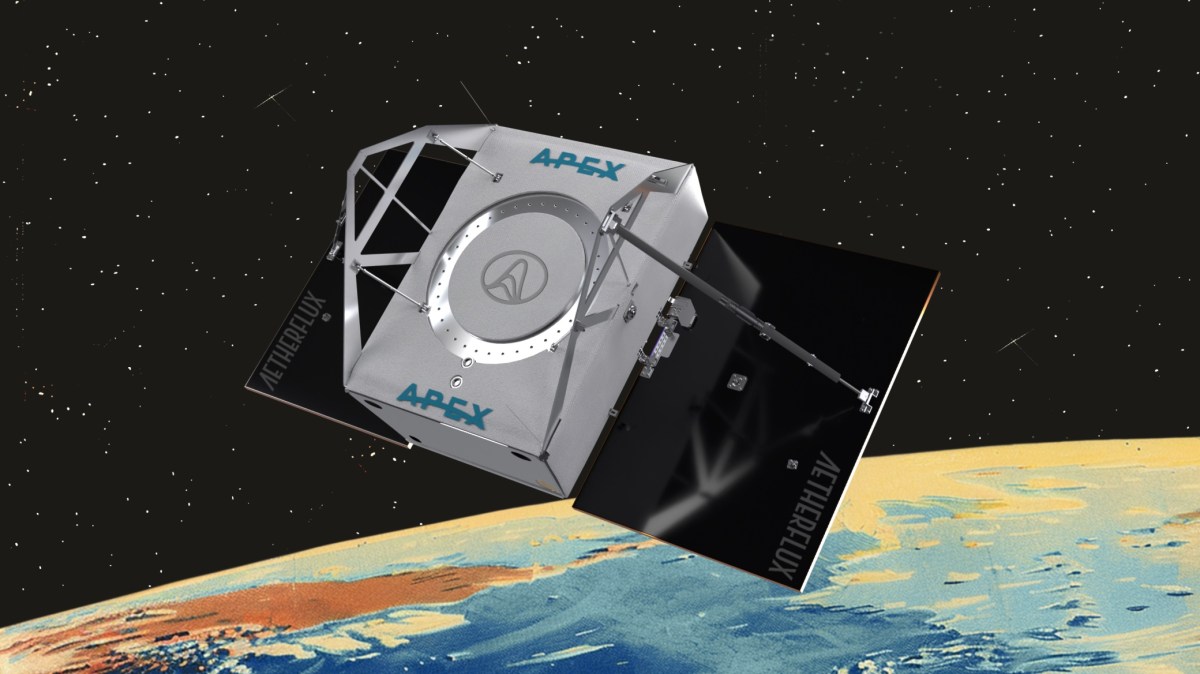WASHINGTON — A startup led by a founder of a financial services company is taking a new approach to space-based solar power intended to be more scalable and affordable than previous concepts.
Aetherflux announced Oct. 9 plans to develop and ultimately deploy a constellation of satellites in low Earth orbit that will collect solar power and beam it to Earth using infrared lasers. The company is planning to demonstrate this technology with a small satellite launching by early 2026.
The concept is a departure from many previous concepts for space-based solar power (SBSP), which have involved large arrays in geostationary orbit. Those systems would transmit their power using microwaves to large rectennas on the ground. Such concepts have been studied for more than half a century but have not advanced beyond the drawing board.
“Our main observation is the reason it hasn’t happened is because that design is not one that you can iterate on,” said Baiju Bhatt, founder and chief executive of Aetherflux, in an interview. “It’s all or nothing.”
Aetherflux’s approach is more modular, he said, using a constellation of smaller satellites in low Earth orbit that the company can iteratively develop. “The approach of power transmission that we’re taking, which is infrared laser based, is something that you can actually make on an arbitrarily small spacecraft.”
That first mission, using a spacecraft bus provided by Apex, will be a “kilowatt-class” spacecraft that will transmit power using an infrared laser to the ground with a spot size of 10 meters. Future spacecraft will generate more power at a lower cost per kilowatt-hour.
That approach does present some technical challenges compared to earlier SBSP designs that, operating in geostationary orbit, appear fixed in the sky from the ground and are also in nearly continuous sunlight. Aetherflux will require a constellation that hands off from one satellite to another to serve a specific location, and also will require power storage on the satellites to be able to operate at night.
The company is initially targeting defense applications, such as forward operating bases where “the supply chain and getting fuel out to somewhere is really challenging,” Bhatt said.
That approach is not new. A 2007 study by the former National Security Space Office found promise in SBSP in providing power to forward operating bases and recommended additional government investment in SBSP technologies. Those recommendations were not acted upon and the report was largely forgotten; Bhatt said he was not familiar with it.
The upcoming demonstration satellite is the first part of a “crawl, walk, run” approach to creating an SBSP capability. “The walk step is crude commercial viability in some of these applications, and running is being able to power more and more applications all around the world,” he said.
Bhatt is self-funding Aetherflux, providing funding in “the ten-millionish range” that is sufficient to get the company through that first demo mission. Bhatt is the co-founder and former co-chief executive of Robinhood, a financial services company. Aetherflux currently had just under 10 employees, he said.
SBSP studiesInterest in space-based solar power was waxed and waned over the decades. A report in January by NASA’s Office of Technology, Policy and Strategy offered a skeptical assessment of SBSP, concluding that the power such systems produce would be far more expensive than terrestrial renewable approaches.
“I thought it was informative,” Bhatt said of the NASA study, but noted it focused more on the “very large scale” systems rather than the modular approach his company is taking. “It doesn’t tell you that much about how to get started.”
Many advocates of SBSP have been critical of the NASA study, which prompted them to pursue their own analysis. A report of that effort, jointly backed by the National Space Society, Internation Academy of Astronautics and International Astronautical Federation, is scheduled to be discussed at an Oct. 12 workshop in Milan just before the International Astronautical Congress there, as well as during a session of the main conference.
John Mankins, the longtime SBSP advocate who is leading the study, said at the Space Logistics Conference Sept. 27 that the study will better reflect the ability of new launch vehicles, like SpaceX’s Starship, to lower launch costs by as much as 99%.
One concept he discussed could deploy a SBSP system in geostationary orbit with about 60 Starship launches. “When I talked about this stuff 10 years ago, this was really hard to imagine,” he said. “These days, that is well within its capabilities.”
Bhatt said he was not aware of this latest study but argued he was ready to pursue his own concept. “I’ve read enough of the case studies on how it could be that I’m at the place where I want to do it.”
